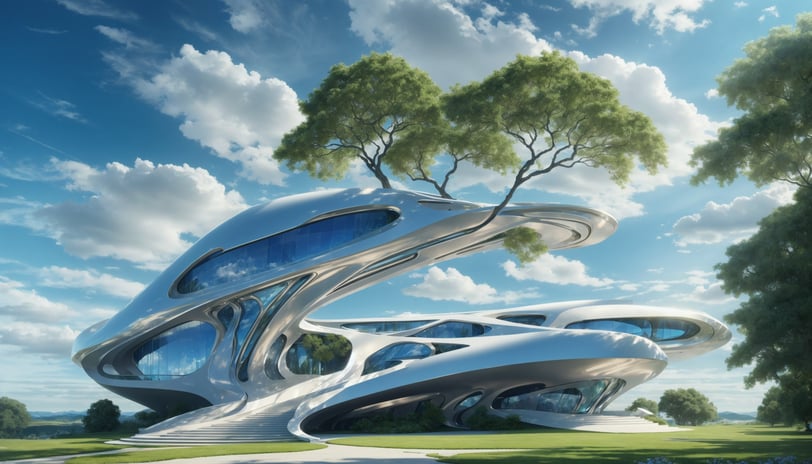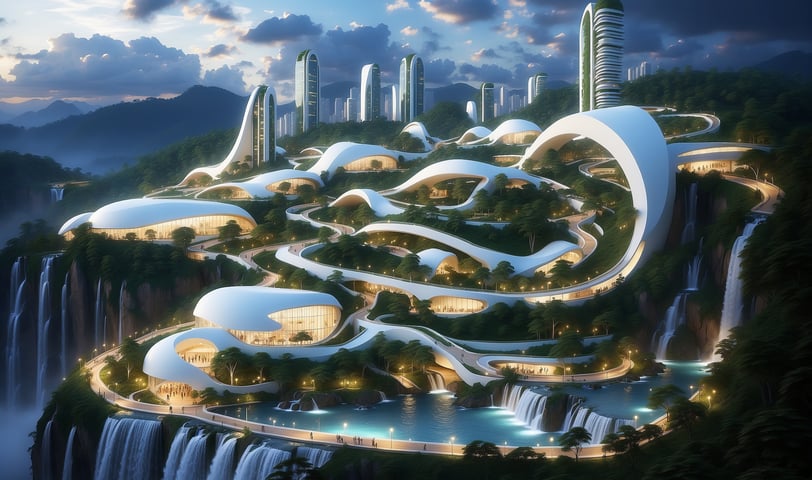Symbiosis of Nature and Modernity
A Glimpse into the Future of AI-Enhanced Architecture
Walid Ghali
10/21/20232 min read


As I embarked on a creative journey, experimenting with AI to generate images, I found myself transported to a world where nature and modernity seamlessly merged. The vision I had was one of a modern house, exuding the avant-garde style reminiscent of the legendary architect Zaha Hadid, harmoniously coexisting with the pristine beauty of the natural environment. It left me pondering a profound question: Could this vision be a glimpse into the future of humanity as we continue to advance in knowledge and intelligence? Will the ultimate evolution of human achievement revolve around a symbiotic relationship with the natural world?
In the realm of architecture, the integration of nature and modern design is a concept that has gained increasing prominence in recent years. This approach, often referred to as 'biophilic design,' aims to create spaces that not only look aesthetically pleasing but also nurture our well-being by connecting us to the natural environment. It's a design philosophy rooted in our innate connection to nature, which has been finely tuned through millennia of evolution.
Imagine a modern home characterized by the flowing, futuristic lines that Zaha Hadid was known for. Its design seamlessly incorporates the surrounding landscape - an integral part of the structure itself. The house appears as though it has organically grown from the earth, its sleek surfaces complemented by lush greenery, and its panoramic windows framing breathtaking natural vistas. It's a perfect synthesis of contemporary aesthetics and the inherent beauty of nature.
AI plays a pivotal role in realizing such architectural dreams. With each advancement in AI capabilities, architects and designers gain access to a powerful toolkit that enables them to visualize, create, and refine their designs in ways that were once unimaginable. AI empowers them to explore innovative forms, optimize energy efficiency, and seamlessly integrate sustainability into their projects. This combination of creative vision and technological prowess sets the stage for a more harmonious relationship between architecture and nature.
AI, with its capacity to process vast amounts of data and simulate complex scenarios, is becoming a valuable ally in environmentally conscious architecture. It allows architects to predict how their designs will interact with the environment, considering factors like sunlight, wind patterns, and natural landscape. This enables them to make informed decisions that not only enhance the aesthetic appeal of a structure but also minimize its environmental impact.
As we stand at the threshold of a new era in architecture, it's exciting to envision a future where AI-enhanced designs will not only reflect our artistic ambitions but also contribute to a more sustainable and harmonious coexistence with nature. The journey to this future will require a continued commitment to pushing the boundaries of AI and architecture, all while preserving the essence of our connection to the natural world.
In conclusion, the symbiosis of nature and modernity in architecture is not just a dream; it's a vision on the cusp of reality. As AI continues to evolve, our architectural creations will increasingly blur the lines between art and nature, offering us a path to a more sustainable and visually stunning world. The future of architecture promises a reimagined human relationship with our environment, and we have AI to thank for helping us build this bridge to a greener, more aesthetically enriched future.


